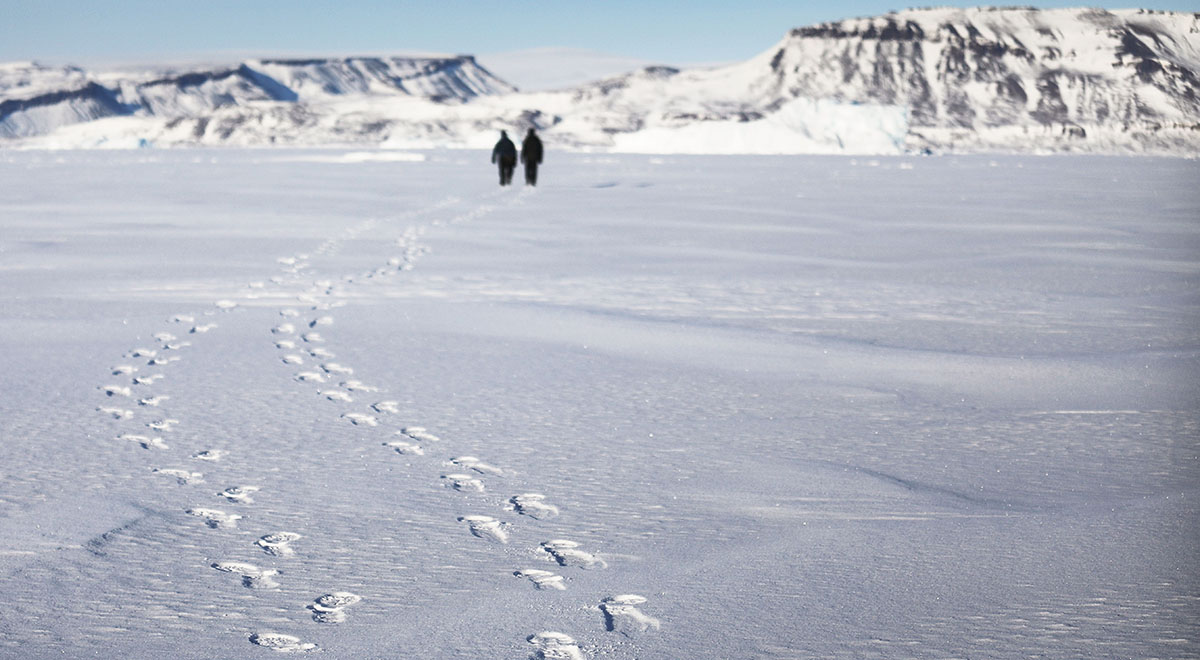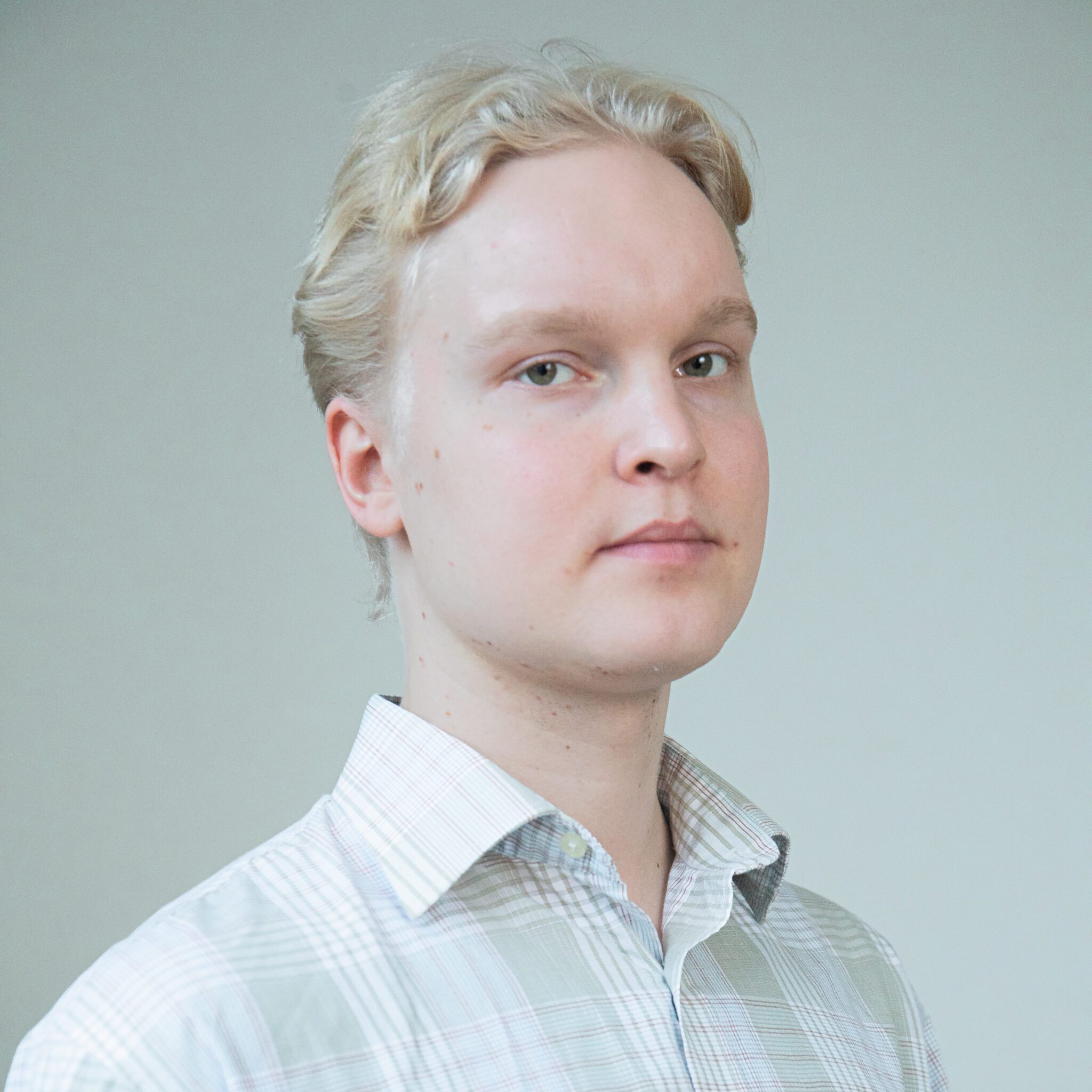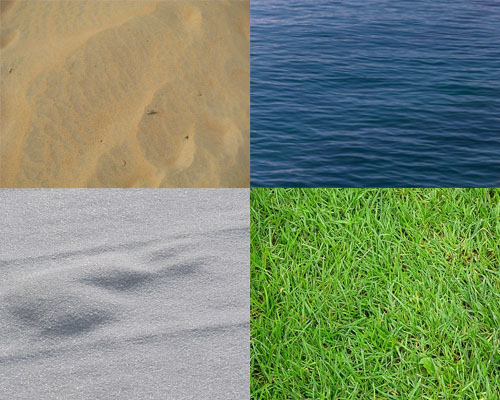Perspective
The Arctic Ice Project Shuts Down
Experts react to the closure of the Arctic Ice Project (AIP), which aimed to slow down the loss of Arctic ice by increasing its reflectivity using very small glass beads.
In January 2025, the Arctic Ice Project announced it would be “concluding its research and winding down the organization”.
The project was an effort to slow down the loss of Arctic ice by deploying “a thin layer of very small hollow glass microspheres across strategically chosen small regions of the Arctic to improve the reflectivity of sea ice”. But it ran into opposition from indigenous groups, and there were some scientific findings that suggested it may have undesired effects.
“While our climate impact simulations have shown promising results (with a new scientific paper forthcoming), recent ecotoxicological tests have revealed potential risks to the Arctic food chain”, the project wrote in a farewell message in January 2025.
“Our initial approach was to continue research aimed at addressing these concerns. Upon further reflection, however, the Board decided that the combination of these new test results with broad skepticism toward geoengineering, resistance to introducing new materials into the Arctic Ocean, and the increasingly challenging funding environment (and paucity of federal research dollars), the most realistic path was to conclude our research.”
We asked experts for their reactions to this news and what implications it might have for similar projects in the future.
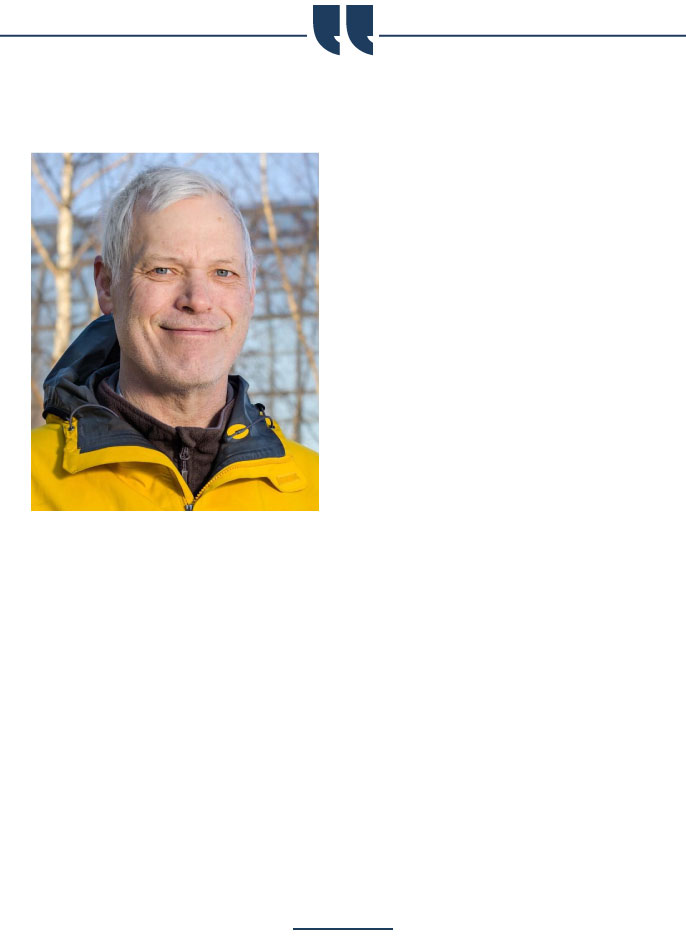
John Moore
Research Professor
University of Lapland
John Moore leads the University of the Arctic Thematic Network on Frozen Arctic Conservation. He is also a Research Professor at Arctic Centre, University of Lapland in Finland and Member of Finnish Academy of Science and Letters. He is a glaciologist, working mainly on ice sheet dynamics and sea level rise, but began his career on ice cores and paleoclimate.
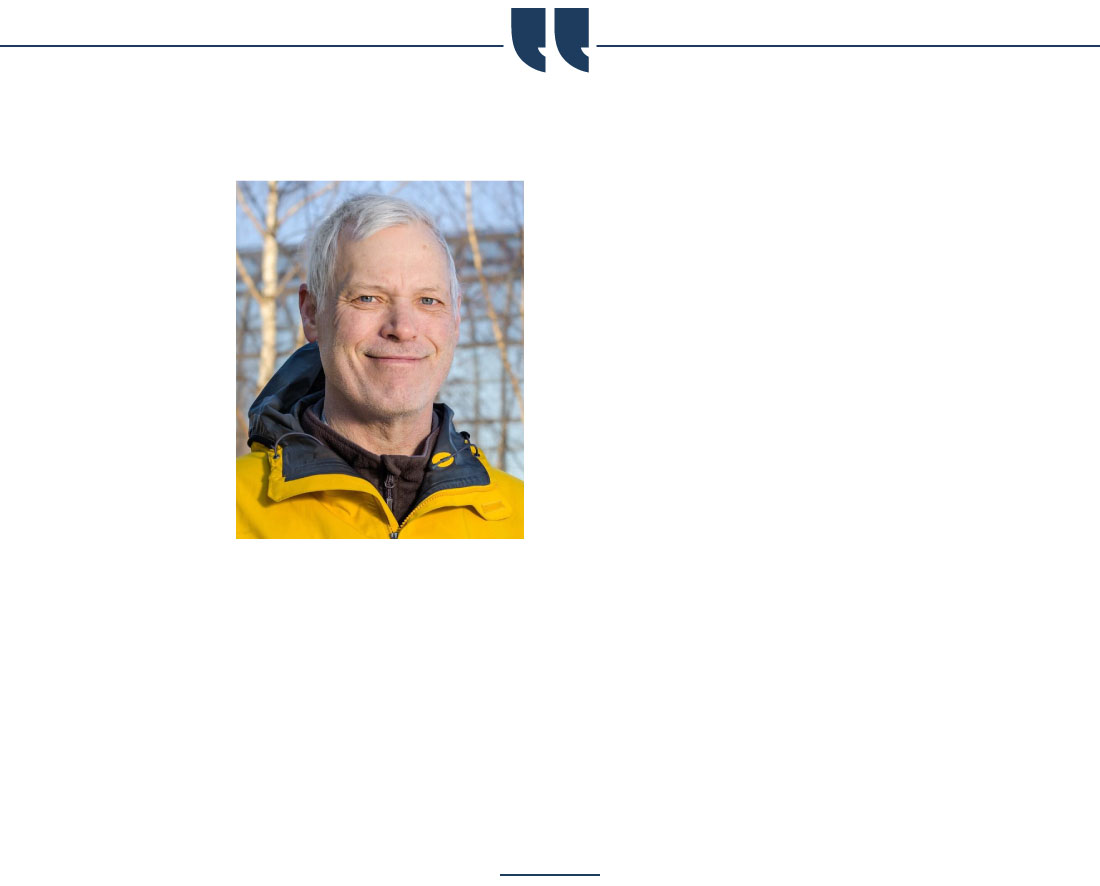
John Moore
Research Professor
University of Lapland
John Moore leads the University of the Arctic Thematic Network on Frozen Arctic Conservation. He is also a Research Professor at Arctic Centre, University of Lapland in Finland and Member of Finnish Academy of Science and Letters. He is a glaciologist, working mainly on ice sheet dynamics and sea level rise, but began his career on ice cores and paleoclimate.

John Moore
Research Professor
University of Lapland
John Moore leads the University of the Arctic Thematic Network on Frozen Arctic Conservation. He is also a Research Professor at Arctic Centre, University of Lapland in Finland and Member of Finnish Academy of Science and Letters. He is a glaciologist, working mainly on ice sheet dynamics and sea level rise, but began his career on ice cores and paleoclimate.
AIP was one approach that we included in our survey of interventions for the high latitudes – there are 61 ideas discussed. Most of them will fail because there is – or at least should be – a sticky slope between research and deployment. So, the closure suggests that the nature of the process was done correctly – they tested their idea and found a deficiency serious enough to warrant termination. This must have been hard for the people who worked on this, but the fact that they honestly reported the failure of their idea should be acknowledged. Many researchers in this field will experience similar emotions in the coming years. But the eventual success of just a few ideas will have enormous payoffs in damages averted, and so scientists and others committed to doing their best will continue to develop and stress-test their ideas.
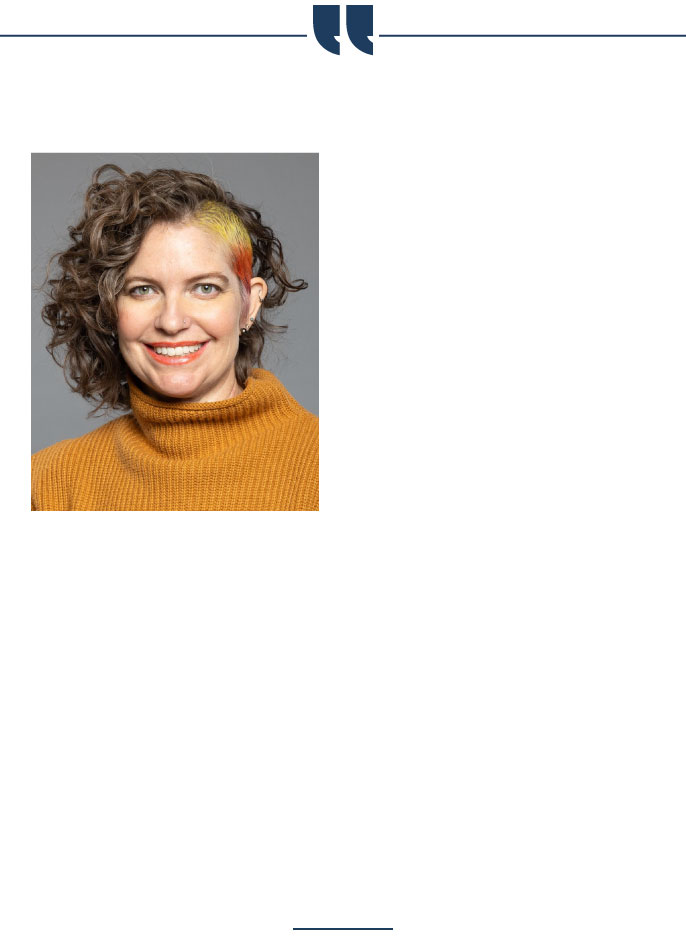
Kerry Nickols
Senior Program Officer
Ocean Visions
Kerry J. Nickols, Ph.D. is a Senior Program Officer at Ocean Visions leading the Marine Ecosystem Repair Program. She recently led a large-scale assessment of approaches to slow the loss of Arctic sea ice for Ocean Visions. Kerry was trained as an interdisciplinary ocean scientist and has additional experience working at the intersection of science and policy.
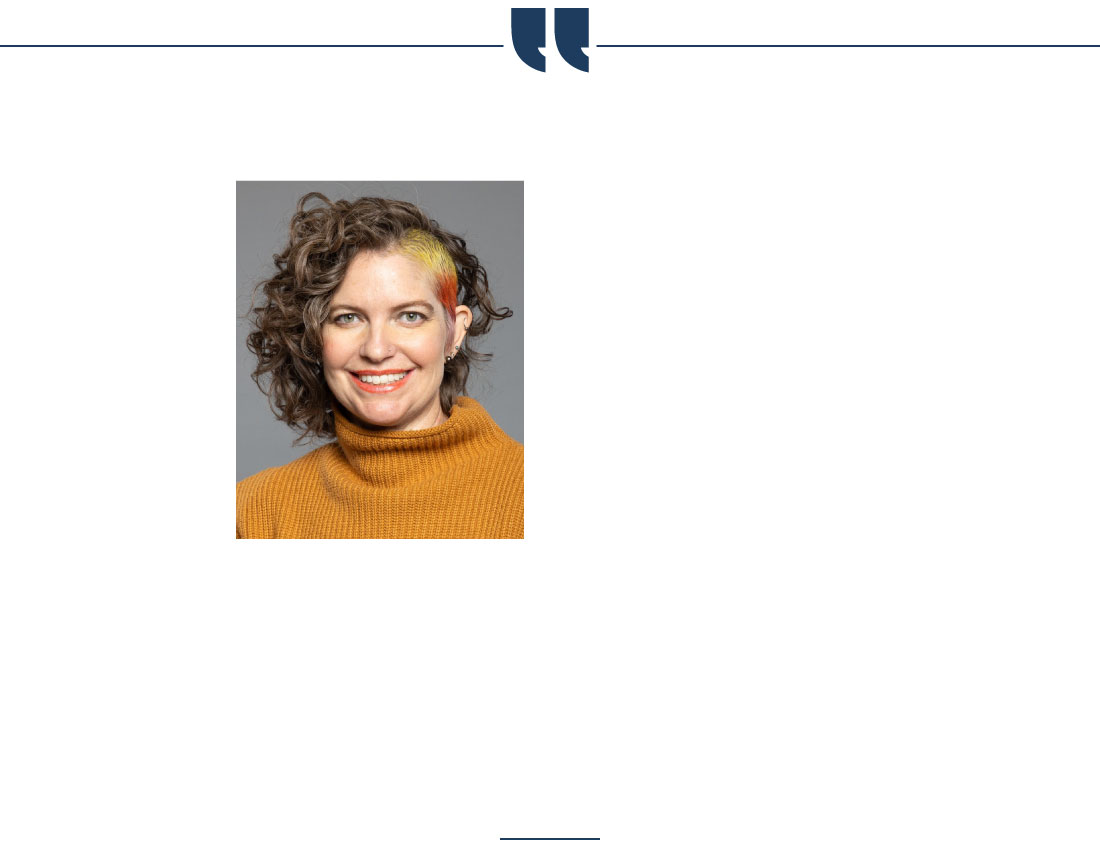
Kerry Nickols
Senior Program Officer
Ocean Visions
Kerry J. Nickols, Ph.D. is a Senior Program Officer at Ocean Visions leading the Marine Ecosystem Repair Program. She recently led a large-scale assessment of approaches to slow the loss of Arctic sea ice for Ocean Visions. Kerry was trained as an interdisciplinary ocean scientist and has additional experience working at the intersection of science and policy.

Kerry Nickols
Senior Program Officer
Ocean Visions
Kerry J. Nickols, Ph.D. is a Senior Program Officer at Ocean Visions leading the Marine Ecosystem Repair Program. She recently led a large-scale assessment of approaches to slow the loss of Arctic sea ice for Ocean Visions. Kerry was trained as an interdisciplinary ocean scientist and has additional experience working at the intersection of science and policy.
I’ve spent the past two years investigating over 20 technologies that may slow the loss of Arctic sea ice, including hollow glass microspheres, the technology studied by AIP. Ocean Visions fully supports the process that led AIP to make the difficult decision to close their doors. After years of research and testing, AIP determined that the hollow glass microspheres they proposed to increase albedo of sea ice had more potential to harm marine ecosystems than restore them because of the impacts on plankton. Given the inability to mitigate the risk, this presented a clear exit ramp for AIP. We support this decision to stop further consideration of this approach, as well as their intention to publish results and make all data publicly available. We believe all climate intervention research projects need frameworks for their research that include clear exit ramps when technologies are shown to not be sufficiently safe or effective. The American Geophysical Union’s Ethical Framework Principles for Climate Intervention Research offers a voluntary starting point for researchers, funders, and policymakers. Importantly, this framework emphasizes inclusive public participation, transparency, and risk assessment. We are hopeful that the community of people working on ideas to slow the loss of Arctic sea ice will adopt these standards.
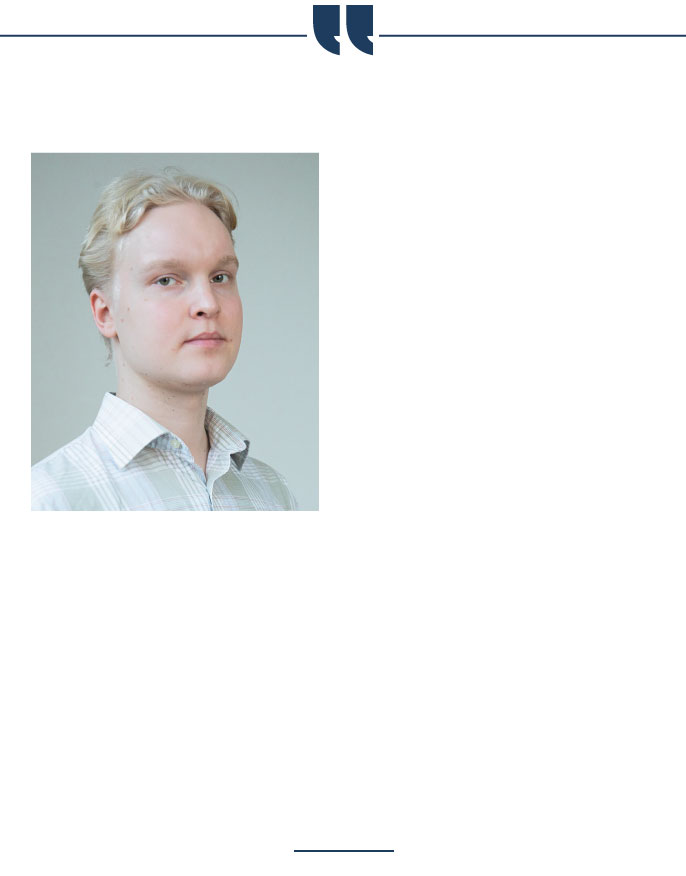
Viktor Jaakkola
Head of Scientific Collaboration
Operaatio Arktis
Viktor Jaakkola is the Head of Scientific Collaboration in the climate strategy agency Operaatio Arktis. The work entails keeping in touch with researchers, closely following developments in the field of climate intervention, and keeping himself and the rest of the team up-to-date.
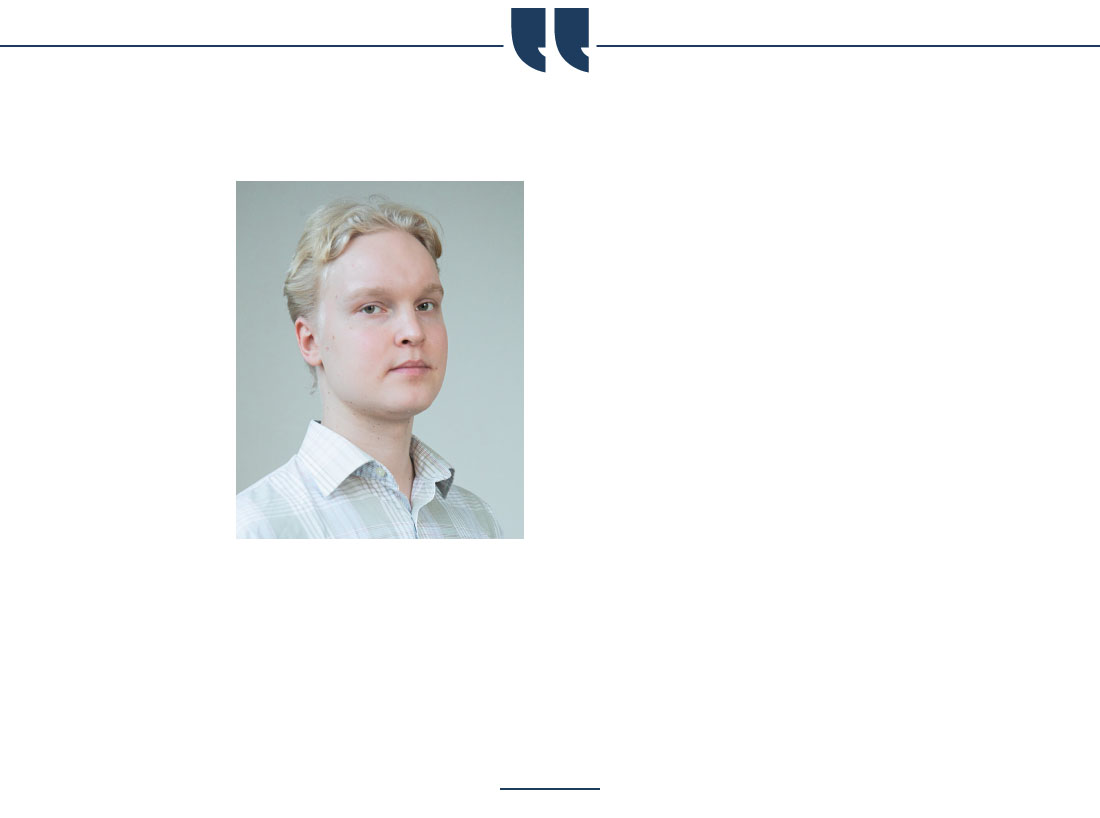
Viktor Jaakkola
Head of Scientific Collaboration
Operaatio Arktis
Viktor Jaakkola is the Head of Scientific Collaboration in the climate strategy agency Operaatio Arktis. The work entails keeping in touch with researchers, closely following developments in the field of climate intervention, and keeping himself and the rest of the team up-to-date.

Viktor Jaakkola
Head of Scientific Collaboration
Operaatio Arktis
Viktor Jaakkola is the Head of Scientific Collaboration in the climate strategy agency Operaatio Arktis. The work entails keeping in touch with researchers, closely following developments in the field of climate intervention, and keeping himself and the rest of the team up-to-date.
Although it’s unfortunate that the spreading of hollow glass microspheres won’t aid sea ice like some hoped it would, I believe that the Arctic Ice Project’s conclusion to cease their organisation in light of new scientific evidence is a testament to the power of the scientific method in guiding our actions. The decision was also influenced by concerns from Indigenous communities, which is a reminder for actors to recognise indigenous knowledge in their assessments and to abide by the free prior and informed consent principles. This is impossible to do in a responsible manner for a small team of researchers with large workloads and a limited budget, since there are a lot of people to consult regarding, for example, field trials in the Arctic. There is a great need for a body or institution that could facilitate discussions, knowledge sharing, and granting of field trial permits regarding the topic of climate interventions in the Arctic. Perhaps the Arctic Council could assist in that.
All in all, I interpret this news as positive for the reputability of the SRM scene in general.
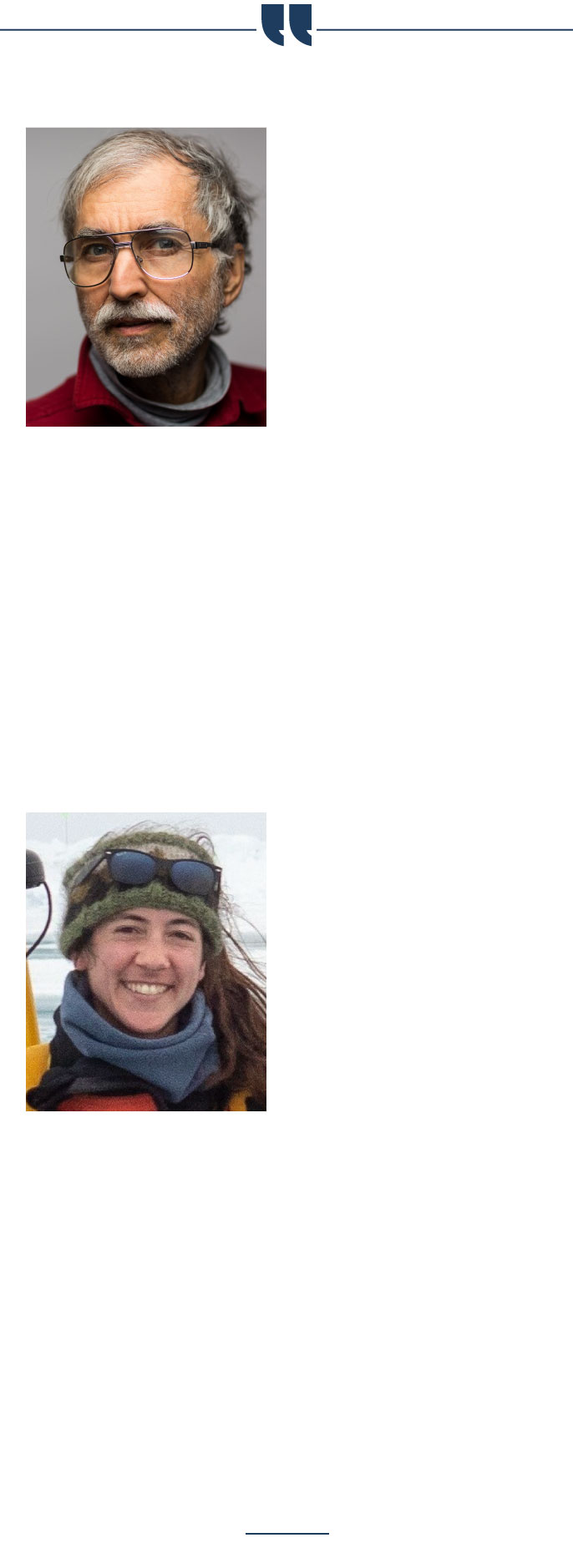
Stephen Warren
Emeritus Professor
University of Washington
Stephen Warren is an Emeritus Professor of Atmospheric Sciences and Earth & Space Sciences at the University of Washington. His research concerns the interaction of solar radiation with snow, clouds, and sea ice, and their role in climate. He has 170 publications, which have been cited about 40,000 times.
Melinda Webster
Research Scientist
University of Washington
Dr. Webster is a research scientist at the University of Washington in Seattle. She studies the role of snow and sea ice in a changing climate through observation and modeling. The scope of her work centers on sea ice and atmosphere-snow-ice-ocean interactions across spatial and temporal scales, from localized event-driven processes to regional interdecadal trends.

Stephen Warren
Emeritus Professor
University of Washington
Melinda Webster
Research Scientist
University of Washington
Stephen Warren is an Emeritus Professor of Atmospheric Sciences and Earth & Space Sciences at the University of Washington. His research concerns the interaction of solar radiation with snow, clouds, and sea ice, and their role in climate. He has 170 publications, which have been cited about 40,000 times.
Dr. Webster is a research scientist at the University of Washington in Seattle. She studies the role of snow and sea ice in a changing climate through observation and modeling. The scope of her work centers on sea ice and atmosphere-snow-ice-ocean interactions across spatial and temporal scales, from localized event-driven processes to regional interdecadal trends.
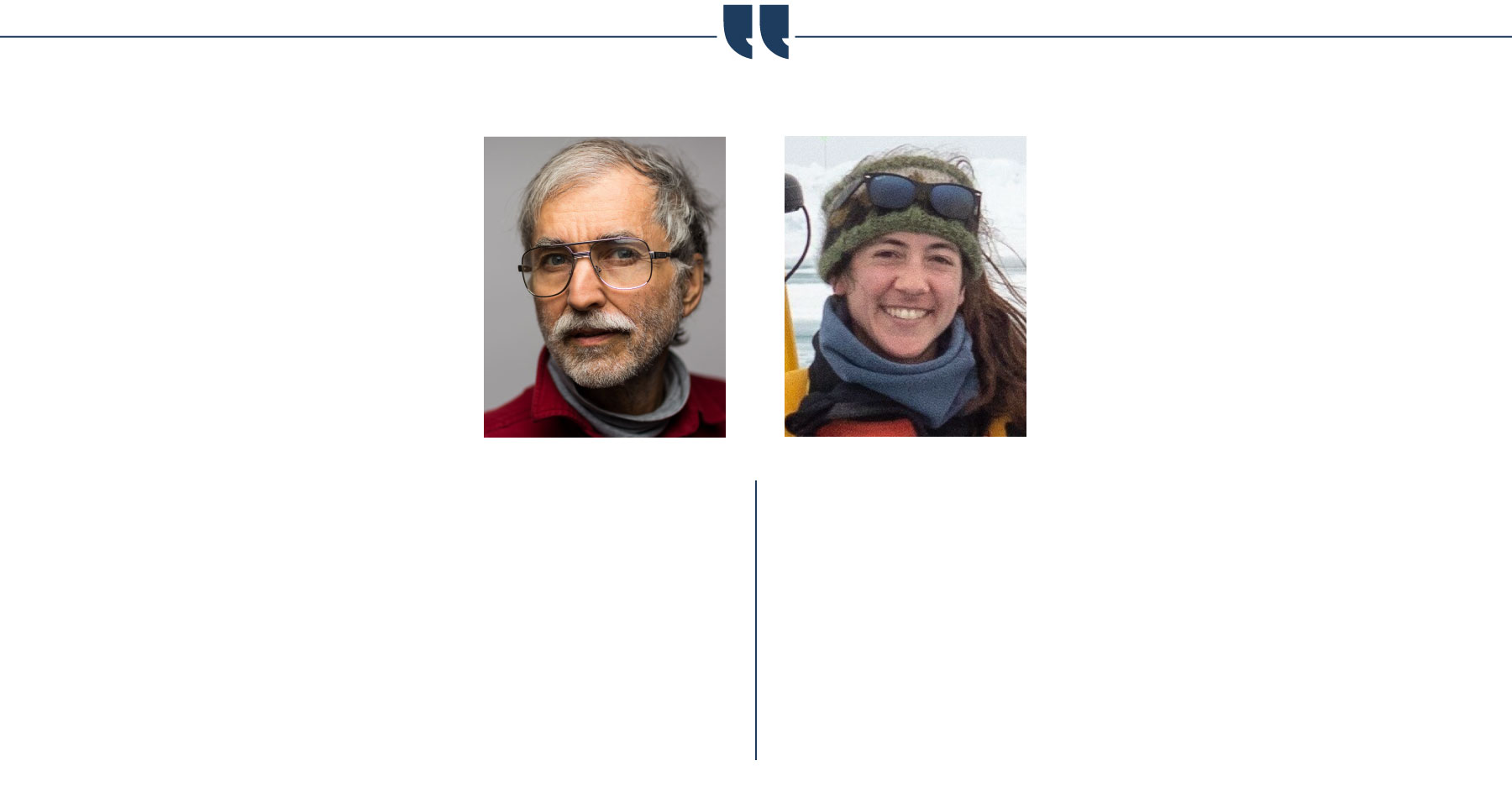
Melinda Webster
Research Scientist
University of Washington
Stephen Warren
Emeritus Professor
University of Washington
Stephen Warren is an Emeritus Professor of Atmospheric Sciences and Earth & Space Sciences at the University of Washington. His research concerns the interaction of solar radiation with snow, clouds, and sea ice, and their role in climate. He has 170 publications, which have been cited about 40,000 times.
Dr. Webster is a research scientist at the University of Washington in Seattle. She studies the role of snow and sea ice in a changing climate through observation and modeling. The scope of her work centers on sea ice and atmosphere-snow-ice-ocean interactions across spatial and temporal scales, from localized event-driven processes to regional interdecadal trends.
In 2021, we were asked by the Geoengineering Modeling Research Consortium to evaluate a proposal by Leslie Field et al. (2018) to spread hollow glass microspheres (HGMs) onto Arctic sea ice. The Field paper included optical laboratory measurements for HGM layers across the solar spectrum. The layers were slightly absorptive, so their application would brighten dark surfaces (such as new ice) but darken bright surfaces (such as snow). Considering the areas covered by each of the eight surface types on the Arctic Ocean, for each month, together with their spectral albedos, the net result was to darken the Arctic, i.e. the opposite of what was intended.
We also computed the effect of distributing hypothetical non-absorbing HGMs, concluding that a moderate cooling of the Arctic, about 3 watts per square meter, could be achieved if 360 megatons were spread annually onto the ice.
The AIP is apparently being terminated because of ecotoxicity concerns, and we approve that decision. The AIP workers are completing their project by publishing their experimental and modeling results, which will provide valuable guidance for future projects.
The views expressed by Perspective writers and contributors are their own and are not necessarily endorsed by SRM360. The goal of our Perspectives is to present ideas from diverse viewpoints, further supporting informed discussion of sunlight reflection methods.
Ask us a question!
Citation
Reuse this work freely
The content produced by SRM360 is open access under the Creative Commons BY license. You are free to use, distribute, and reproduce these in any medium, provided that SRM360 and the authors are credited.
The sources used by SRM360 are subject to the licence terms of the original third party. We will always indicate the original sources in our content, so please review the licence of any third-party sources before use and redistribution.

